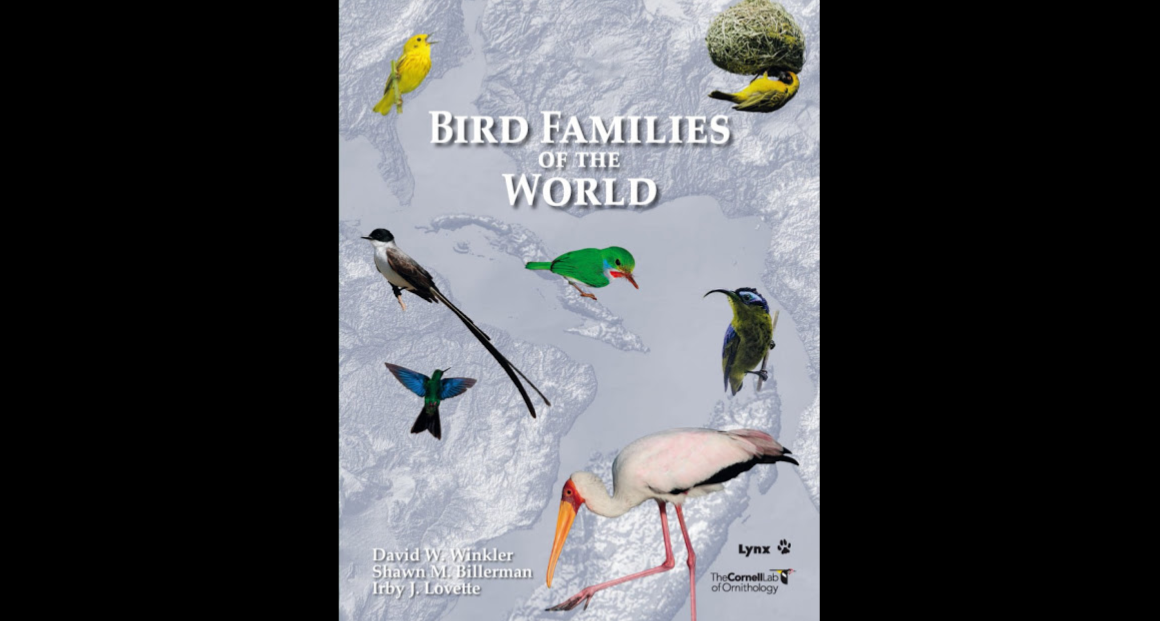
There is a thing parents know very well – how important it is to choose the right name for a child. E.g. one Croat birder I know, Vedran – I never met a guy so well described by his own name, which loosely translates as “joyful”. Or Fleming – he has chosen “Bond”.
It seems to me that Lynx Edicions must know Vedran, too, and it was with him in mind that their authors, David W Winkler, Shawn M Billerman and Irby J Lovette, chose the “Bird Families of the World: A Guide to the Spectacular Diversity of Birds” as the full title of their new edition. Because this book is nothing short of spectacular.
Presented in numbers, Bird Families of the World has 2417 field guide style paintings, plus 797 bird photos, followed by 252 distribution maps. It weighs 3.7 kg (7.4 pounds), its dimensions are 24 × 31 cm (9.4 x 12.2 inches) and it has 600 pages of pure gold.
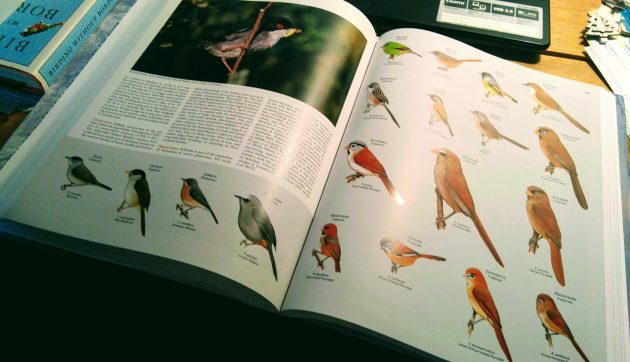
But why am I even interested in bird families in the first place? Birders normally care about species and make species lists, how do families fit into those? Adding more species brings a lot of excitement, as long as you bird your own country or a continent. But, as you go farther and start exploring new continents, adding species to your list becomes ever more frustrating, because the odds are against you. That gamble is rigged, so the house always wins.
11,000 species require lots of money and a good portion of one’s life. Maybe you are a lucky kid whose parents took you birding South America as a toddler, a rich heir with an inheritance to burn, a lucky diplomat choosing your tropical posts, an international bird guide or a bird tour agency owner? I cannot think of any other option that I know of to actually cover any significant percentage of the world’s birds. And there may be two thousand and quite possibly fewer birders who fit the aforementioned positions.
Being an average guy, you simply don’t stand a chance of seeing any significant number of them. For example, I have birded 4 continents, Europe, Southern Africa, South Asia and Central America and have seen 200-300 species in every region, yet, due to overlapping, they do not even sum up to a 10% of all bird species!
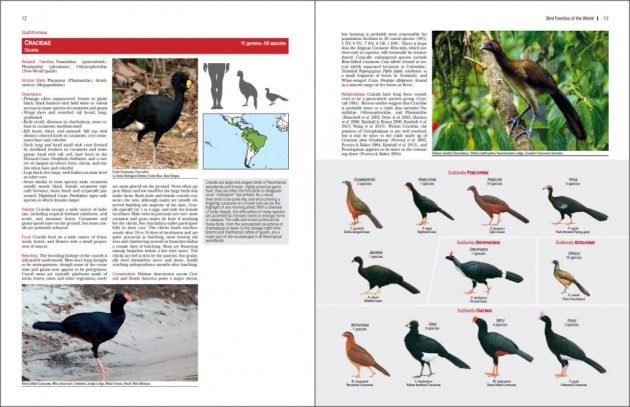
So I asked myself, is there any other, possibly more satisfying way to count birds? Families perhaps? It turned out that I have observed nearly half, or 48% of bird families. Now, I have a sense of satisfaction because of the achievement (as opposed to frustration), and a reasonable goal that should be within reach, to observe a few more families and round the figure to 50 per cent.
The publisher of the Bird Families of the World describes it as a synopsis of the diversity of all birds in one volume: “…this volume distills the voluminous detail of the 17-volume Handbook of Birds of the World into a single book.”
Most families are depicted in two pages of text and illustrations. The text deals with Related Families, Similar Birds, Description, Habitat, Food, Breeding, Conservation and Relationships. The illustrations usually include several photos and field guide paintings (from HBW) of a sample member of each genus.
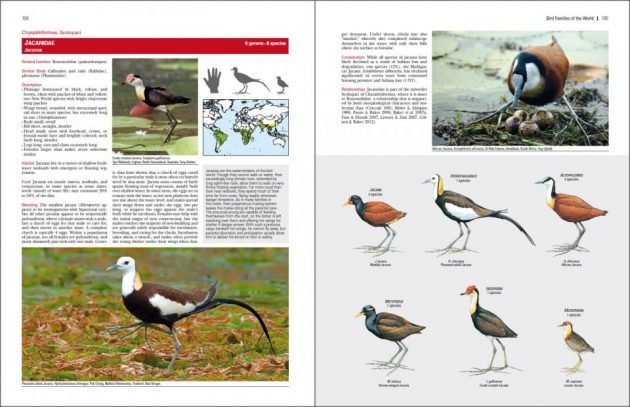
Lynx Edicions continues: “Technical terminology is much reduced, and all scientific terms used are defined in a glossary. Introductory material describes the scope and concepts behind the classification used and gives suggestions about how best to use the book. The bulk of the volume is a family-by-family account of the birds of the world. For each family there is a distribution map with the breeding, non-breeding and year-round ranges of each family, a short text ‘teaser’ to invite the reader to learn more, standardized descriptions of the appearance, relationships and similar species to each family’s members, their life history and conservation status. Each account includes a review of recent ideas about the relationships of the family to other families and relationships within it. The work is liberally illustrated by photographs from bird enthusiasts around the globe as well as paintings of one species from each of the genera in each family.”
According to HBW’s global avian taxonomy, there are 36 orders and 243 families of birds. The taxonomic changes are too numerous to be dealt with, e.g. in HBW, the Old World Warblers (Sylviidae) had 272 species in 42 genera and now they have 65 species in 19 genera. There were about 70 Phylloscs warblers (genus Phylloscopus), now included in the new family, the Leaf Warblers (Phylloscopidae) holding the genus Phylloscopus, which is by now reduced to 15 species. But how? Our beloved Wood Warbler, Phylloscopus sibilatrix, become Rhadina sibilatrix, and so on… Nowadays, I no longer have a clue where any family belongs – the more I know, the more I know I don’t have a clue.
The only modest, even shy aspect of this book is its front cover, with successful documentary photos of some colourful species (still, not really front cover material) upon overcast continents and cheerless oceans, not nearly attracting the attention Bird Families rightfully deserve. To make matters sillier, even the back cover is more seductive than the front cover!
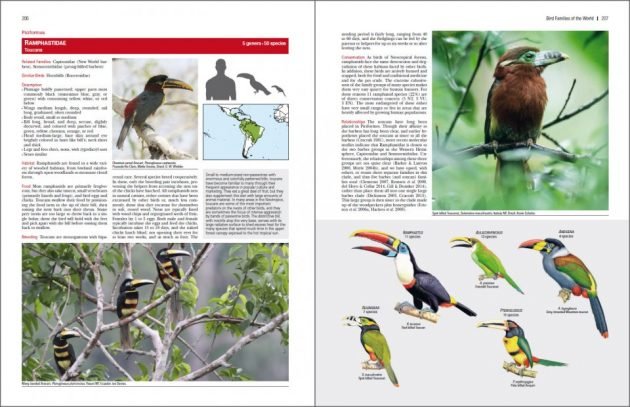
But once you get inside the covers, Bird Families of the World is such a glamorous masterpiece that words elude me when I try to describe it. It is a rare thing to have a truly scientific book, a proper reference work dealing with something frighteningly confusing as molecular phylogenetics, authoritative and, yet, easy to read and understand and, at the same time, with such a stunning artwork that it will proudly join your coffee table collection and stay there for years. I take my hat off.
Bird Families of the World: A Guide to the Spectacular Diversity of Birds
by David W. Winkler, Shawn M. Billerman, and Irby J. Lovette
600 pages, 750 colour photos, 2,336 illustrated bird figures, 243 distribution maps.
Co-published by Lynx Edicions and the Cornell Lab of Ornithology, December 2015
ISBN-10: 8494189204 ISBN-13: 978-8494189203













Do you know if this book is available anywhere in Serbia, or is it only possible to acqiure it via shipping?
Thank you for sharing the information, and for the excellent read! 🙂
Is the 2015 edition the latest?
Yes, it was published in 2015 and that is the latest edition (and the only one)
You cannot find this book in Serbia. And, from Serbia, your possibly best bet is the bookdepository.com. They deliver free of charge and are known to be reliable, a few of my friends tried and recommend them.
I will look into it. Thank you for the information! Much appreciated! 🙂
Thanks for the review! I really love that book. Although my site Clements taxonomy is used, the differences with HBW taxonomy on this beautiful book are minor and you can compare these popular methodologies (and IOC) on this page: http://www.birdfamiliesoftheworld.com/compare-families-clements-ioc-hbw/
Such a great review!